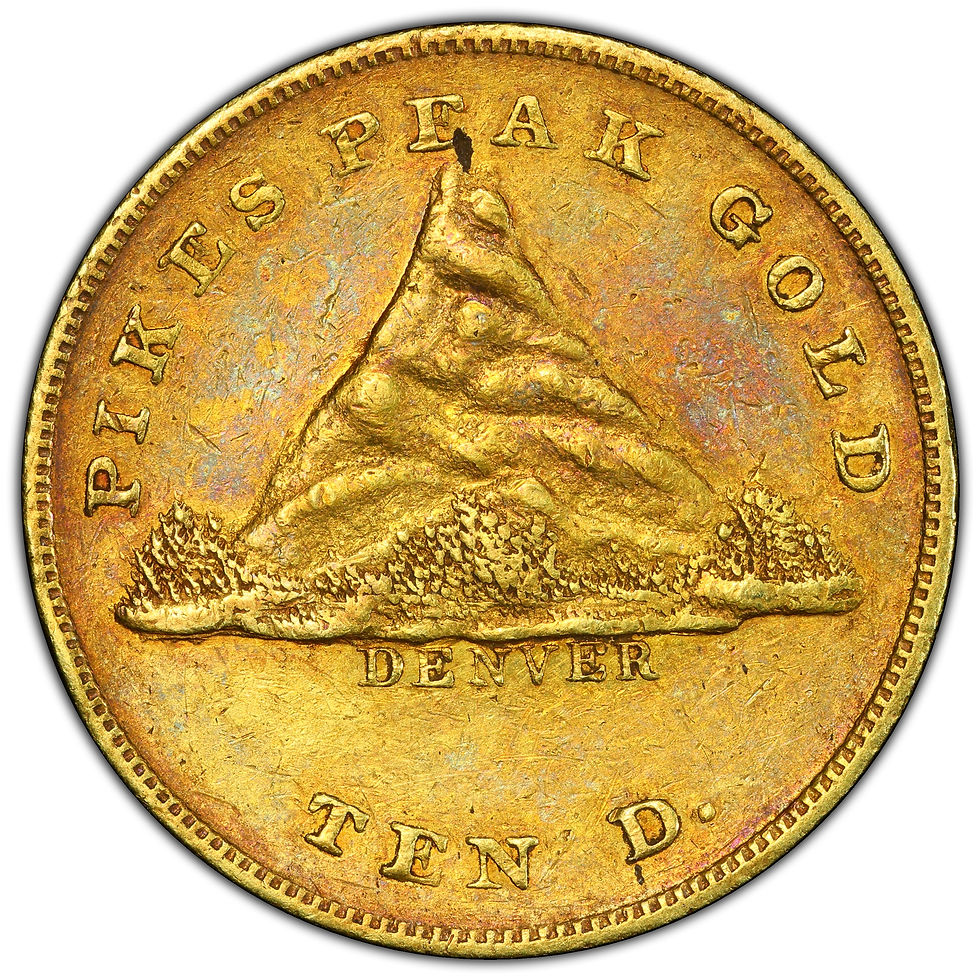1860 Clark, Gruber and Co. Mountain $10 PCGS AU53+ Kagin-McCarthy Plate Coin
The Mountain $10 is one of the most significant territorial issues ever minted, and one that encapsulates the mania of the Gold Rush era, as well as the ingenuity of shrewd businessmen to jumpstart private mints during this time. This initiative enabled the gold that was discovered at Pikes Peak, Colorado in 1858 to be processed closer to the mines, and this led to the rise of one of the most prolific private mints in history: Clark, Gruber and Company.
Austin M. Clark and Milton E. Clark had settled in Leavenworth, Kansas around 1855, and Emanuel Henry Gruber around 1857. As workers in a grocery store, the store was one of the last stops for the rugged and weary miners before embarking on an arduous and long journey for gold-seekers heading west. As the terminus, they were able to stay up-to-date on the news regarding where gold was found, and in 1859, as the news raged throughout the midwest regarding the gold fields of Pike’s Peak, the Clark brothers and Gruber saw an opportunity and took it. Since Leavenworth was one of the last stops before the trails, it was also one of the first stops for returning prospectors.
Clark, Gruber and Co. initially started as a brokerage firm in Leavenworth, Kansas, before moving to Denver in response to the nearby gold rush. To save on the costs of shipping gold back east, they opened a private bank and mint on July 25, 1860, in Denver, Colorado. The mint produced gold coins, including $10, $20, $5, and $2.5 denominations.
Over its nearly three years of operation, the company minted $594,305 worth of gold coins and also dealt with large quantities of raw gold. When the territory of Colorado was created in 1861, questions arose about the need for a branch mint in Denver, and thus Clark, Gruber and Company sold their building to the United States Mint, and the Denver mint was born.
This Clark, Gruber “Mountain Ten” exhibits hues of magenta, baby blue, and salmon throughout the periphery and fields. Per David McCarthy, “the early refining of gold in Colorado was rich in silver, and only the early strikes of this issue tend to tone wildly like this.” The strike is sharp, with much detail remaining in the foliage at the base of Pikes Peak, the mountain itself, as well as the eagle. The surfaces are free of major distractions and this example has strong eye appeal for the advanced gold collector.
PCGS Price Guide - $45,000
PCGS Population - 1/49


